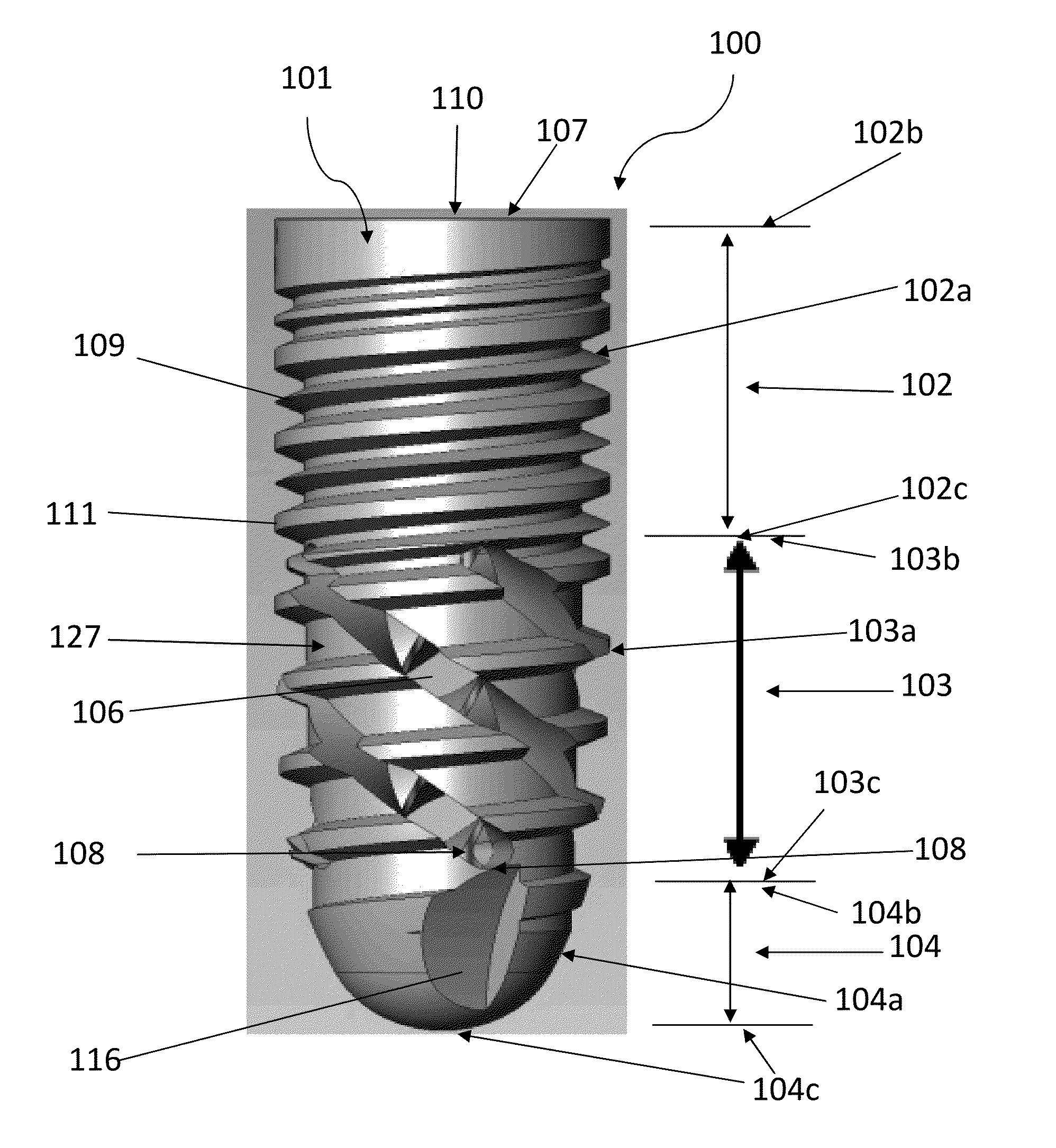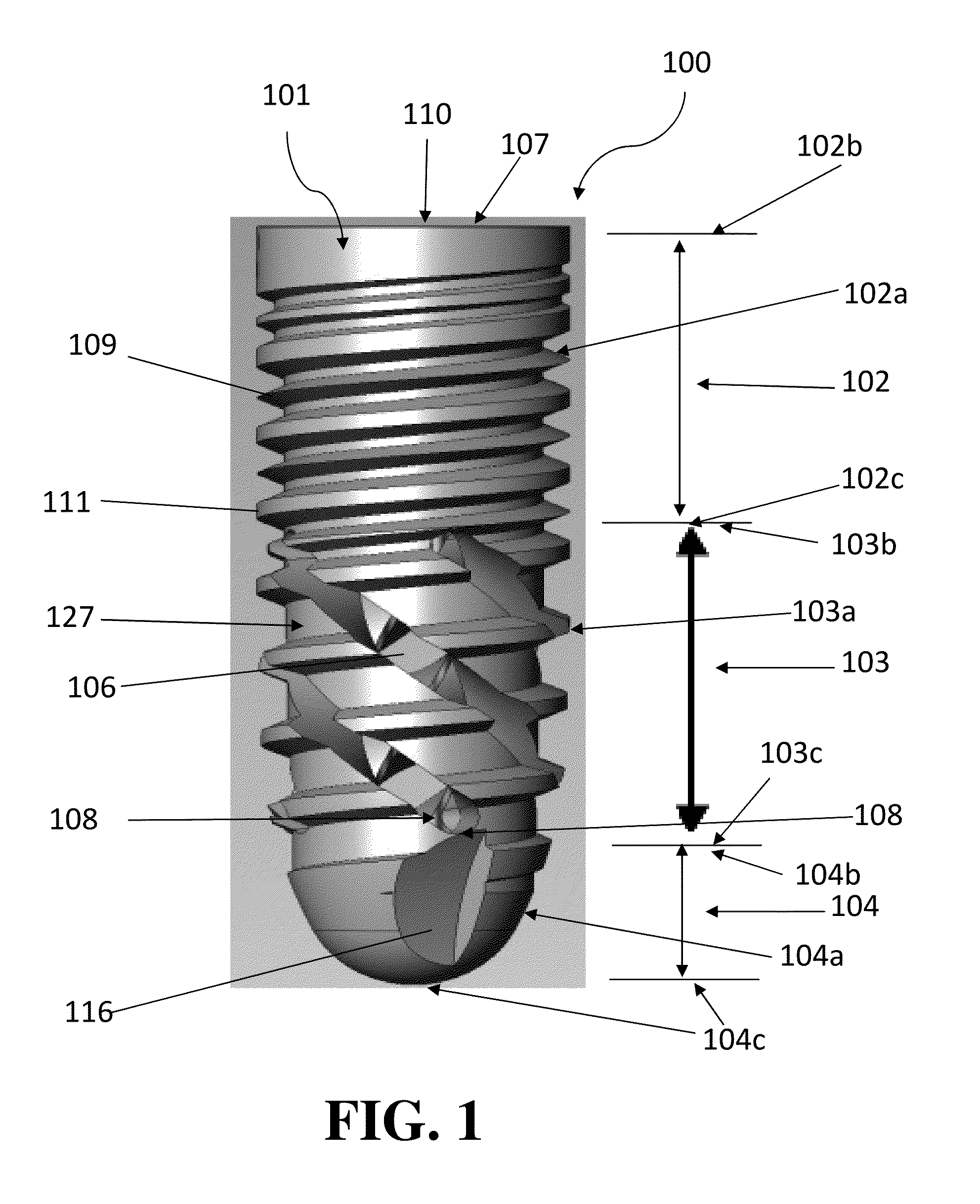Hybrid dental implant
a dental implant and hybrid technology, applied in dental implants, dental surgery, medical science, etc., can solve the problems of implant system failure, implant risk, bone damage at the bone-implant interface, etc., to accelerate bone regeneration, enhance bone regeneration, and be convenient to use.
- Summary
- Abstract
- Description
- Claims
- Application Information
AI Technical Summary
Benefits of technology
Problems solved by technology
Method used
Image
Examples
example 1
[0059]Resonance Frequency Analysis (RFA) has been introduced as a non-invasive method to clinically estimate the stability of dental implant systems. The objective of this study was to examine whether implant stability quotient (ISQ) values of RFA can account for mechanical stability of the dental implant system, which is assessed using dynamic mechanical analysis (DMA).
[0060]Materials and Methods:
[0061]Forty two screw-type titanium dental implants (4.1 mm diameter×10 mm length) were placed in artificial polyurethane foams with 7 different thicknesses (3.5 to 12 mm, 6 individual implants for each thickness). After ISQ values, insertion torque, and static stiffness of each implant system were measured, the DMA (−7±1.5 N at 0.5, 1, 2, 3 Hz) was performed to assess dynamic stiffness and viscoelastic tan 6.
[0062]Results and Conclusion:
[0063]The ISQ value had strong positive correlations with thickness, insertion torque, static and dynamic stiffness and a negative correlation with tan 6 ...
example 2
[0064]This study examined whether a dental implant system made in part of a highly porous tantalum material can have comparable stability to a traditional threaded implant system, and whether bone would grow into the porous part during post-implantation healing.
[0065]Materials and Methods:
[0066]Eight healthy 1-year-old male coonhound dogs with permanent dentition were selected because of their anatomical size and bone remodeling characteristics. A threaded, tapered dental implant made of hybrid composition materials, titanium alloy (Ti6A14V), and a highly porous tantalum material was used for the experimental group. The 3-piece dental implant assembly consisted of (1) a threaded titanium cervical section with a smaller diameter central column that extended apically for internal implant support, (2) a porous tantalum shell that fit over the internal central column, and (3) a threaded titanium apical section. A tapered, threaded, titanium alloy implant was used for the control group.
[...
example 3
[0074]This study examined how bone tissue mineral distribution is altered by estrogen deficiency-induced active bone remodeling.
[0075]Materials and Methods:
[0076]Two groups of Sprague-Dawley female rats (6 months old, 288±24 g) were obtained. One rat group received a bilateral ovariectomy (OVX) operation and the other group received a sham operation. After an 8-week post-operation period, the rats were euthanized and vertebrae were obtained. After the removal of all soft tissue and posterior processes, the vertebral specimens were stored at −21° C. until utilization.
[0077]After thawing at room temperature, specimens were scanned by a micro-computerized tomography (micro-CT) scanner (SkyScan 1172-D, Kontich, Belgium) with the scanning and reconstruction voxel sizes set at 16×16×16 μm3. The same scanning conditions (49 kV, 200 μA, 0.4° rotation per projection, 8 frames averaged per projection, and 40 ms exposure time) were used for all specimens. Using a calibration curve based on kno...
PUM
 Login to View More
Login to View More Abstract
Description
Claims
Application Information
 Login to View More
Login to View More - R&D
- Intellectual Property
- Life Sciences
- Materials
- Tech Scout
- Unparalleled Data Quality
- Higher Quality Content
- 60% Fewer Hallucinations
Browse by: Latest US Patents, China's latest patents, Technical Efficacy Thesaurus, Application Domain, Technology Topic, Popular Technical Reports.
© 2025 PatSnap. All rights reserved.Legal|Privacy policy|Modern Slavery Act Transparency Statement|Sitemap|About US| Contact US: help@patsnap.com



